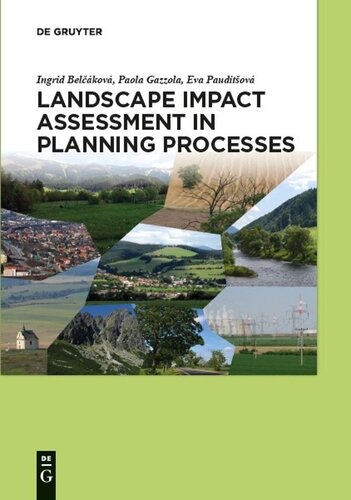

Most ebook files are in PDF format, so you can easily read them using various software such as Foxit Reader or directly on the Google Chrome browser.
Some ebook files are released by publishers in other formats such as .awz, .mobi, .epub, .fb2, etc. You may need to install specific software to read these formats on mobile/PC, such as Calibre.
Please read the tutorial at this link: https://ebookbell.com/faq
We offer FREE conversion to the popular formats you request; however, this may take some time. Therefore, right after payment, please email us, and we will try to provide the service as quickly as possible.
For some exceptional file formats or broken links (if any), please refrain from opening any disputes. Instead, email us first, and we will try to assist within a maximum of 6 hours.
EbookBell Team

5.0
18 reviewsAims and Scope
Growing social and economic needs exert major pressures on landscapes, challenging preserved landscape values and the regional significance of places. As a result, the scope oflandscape management has broadened and diversifiedin response to international calls for greater landscape protection, and to existing and new challenges, such as thoserelating to climate change adaptation and ecosystem services. Within this context, landscape impact assessment and more in general landscape planning have been regarded as effective mechanisms for promoting and, at the same time, as the basis of sustainable landscape development.
Set within the European context, thisbookaims to provide acontemporary review of landscape impact assessment theory and practice, looking at both the project and planning level. It coversthe overall process, content and scope of landscape impact assessment, including the main principles for good practice. Thisbook also provides guidance on a rangeof methods and techniques for different aspects of landscape impact assessment and public participation needs; and explains the advantages of close co-ordination between landscape impact assessment and landscape planning, especially in land use planning. Finally, a selection of case studies reviewing different aspects and practices of landscape impact assessment are reviewed.
This book will be of interest to professionals involved in the day-to-day application of landscape impact assessment, as well as scholars and teachers working in the broad area of landscape planning andmanagement.
The authors of thisbook have vast experiencein the research and practice of environmental assessment and landscape management.